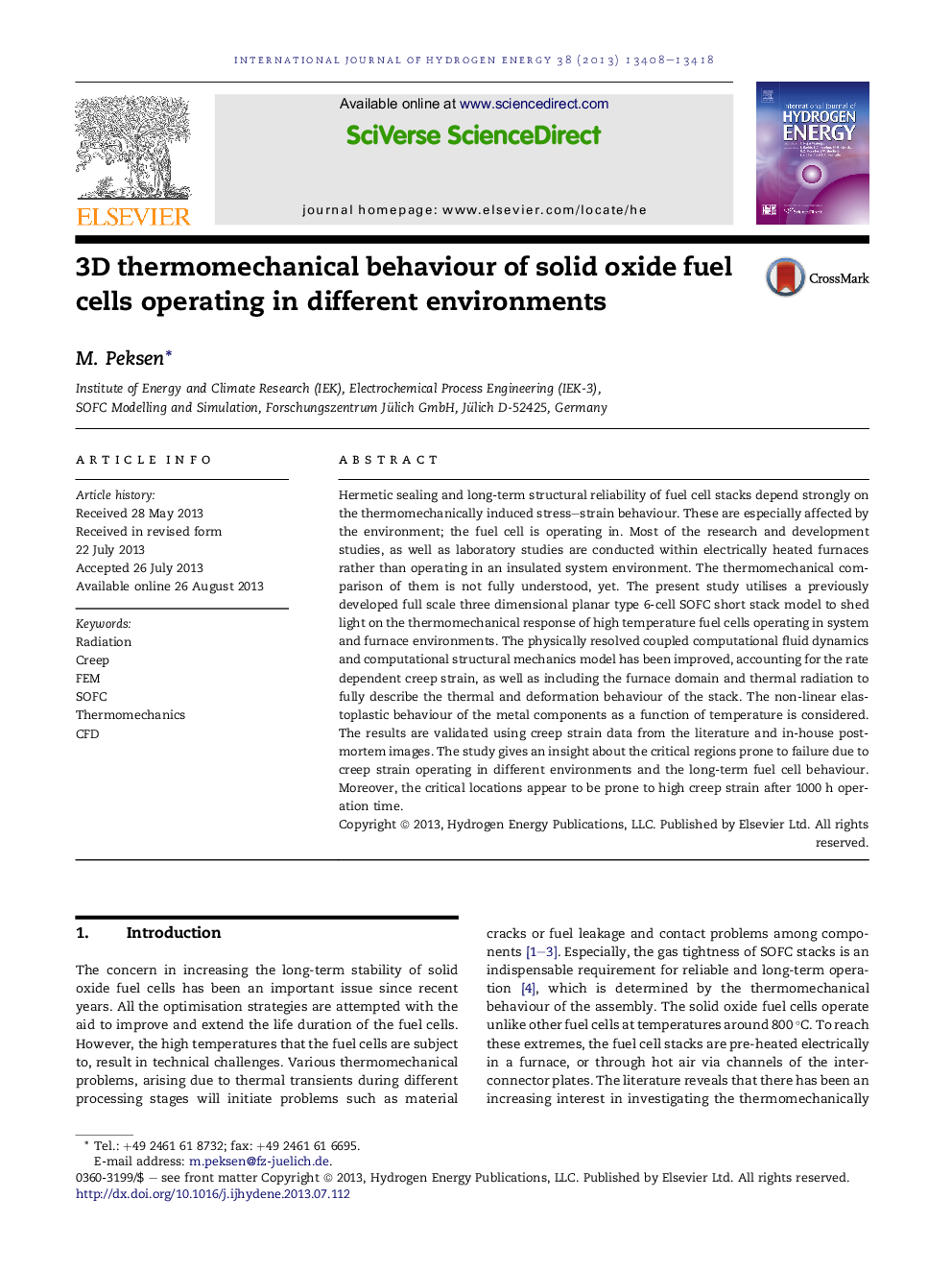| کد مقاله | کد نشریه | سال انتشار | مقاله انگلیسی | نسخه تمام متن |
|---|---|---|---|---|
| 1273347 | 1497515 | 2013 | 11 صفحه PDF | دانلود رایگان |

• Thermomechanical comparison of furnace and system operation is given.
• Experimentally validated creep strain data and post-mortem images are used.
• A 6-cell SOFC short stack is analysed using CFD/FEM.
• Creep strain, thermal radiation and sealants are considered.
• Long-term creep behaviour is simulated in 3D.
Hermetic sealing and long-term structural reliability of fuel cell stacks depend strongly on the thermomechanically induced stress–strain behaviour. These are especially affected by the environment; the fuel cell is operating in. Most of the research and development studies, as well as laboratory studies are conducted within electrically heated furnaces rather than operating in an insulated system environment. The thermomechanical comparison of them is not fully understood, yet. The present study utilises a previously developed full scale three dimensional planar type 6-cell SOFC short stack model to shed light on the thermomechanical response of high temperature fuel cells operating in system and furnace environments. The physically resolved coupled computational fluid dynamics and computational structural mechanics model has been improved, accounting for the rate dependent creep strain, as well as including the furnace domain and thermal radiation to fully describe the thermal and deformation behaviour of the stack. The non-linear elastoplastic behaviour of the metal components as a function of temperature is considered. The results are validated using creep strain data from the literature and in-house post-mortem images. The study gives an insight about the critical regions prone to failure due to creep strain operating in different environments and the long-term fuel cell behaviour. Moreover, the critical locations appear to be prone to high creep strain after 1000 h operation time.
Journal: International Journal of Hydrogen Energy - Volume 38, Issue 30, 8 October 2013, Pages 13408–13418